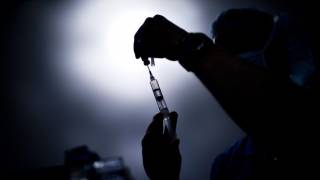1918 and 2009 H1N1 Flu Probably Not Spread by Birds
Source: sciencedaily.com

The two strains of the H1N1 influenza virus responsible for the 1918 and 2009 global flu pandemics do not cause disease in birds. The results of the study, published in the February issue of the Journal of General Virology, also show it is unlikely that birds played a role in the spread of the H1N1 virus in these pandemics.
Scientists from the Canadian Food Inspection Agency's National Centre for Foreign Animal Disease (NCFAD) in Winnipeg, Canada, together with collaborators in the USA, injected the 2009 and 1918 H1N1 virus strains individually into chickens. None developed flu symptoms or showed any signs of tissue damage up to18 days later, although about half the chickens developed antibodies against the 1918 H1N1 virus showing limited infection. The 1918 H1N1 virus also did not cause disease in ducks.
The origin of the 1918 H1N1 virus is unknown and despite its genetic similarity to avian influenzas, the results of this study show it is unlikely to have jumped the species barrier from chickens to humans.
Different strains of influenza cause disease in humans, birds and pigs; each type of virus is adapted to cause infection in its host. All cause similar respiratory symptoms. If flu viruses are passed back and forth between hosts (e.g. through close human contact with infected animals) the mixing can lead to development of a novel strain. As they have not encountered the virus before, the human population has little or no immunity to a novel strain which can easily cause infection and spread from person to person. This may ultimately lead to a global flu pandemic.
Dr Shawn Babiuk, a scientist with the National Centre for Foreign Animal Disease who led the research, said, "Working out how major human pandemic flu viruses affect birds and other domestic animal species is crucial in discovering what role, if any, they play in spreading viruses in the human population." Such studies can inform government decisions in responding to outbreaks of influenza in birds, which have major implications for poultry producers. According to Dr Babiuk, "These findings support the use of normal veterinary management practices in poultry infected with pandemic 2009 H1N1 influenza and demonstrate that quarantining and culling infected stocks is not necessary."
Dr Babiuk explained that viruses can behave unpredictably. "Our understanding of exactly how influenza viruses go on to cause pandemics is still limited," he said. "Although our research indicates that birds are unlikely to have played a part in the spread of the 1918 and latest 2009 H1N1 pandemic viruses, they may well still play a part in future pandemics."
Article from: ScienceDaily.com
Images: Source























